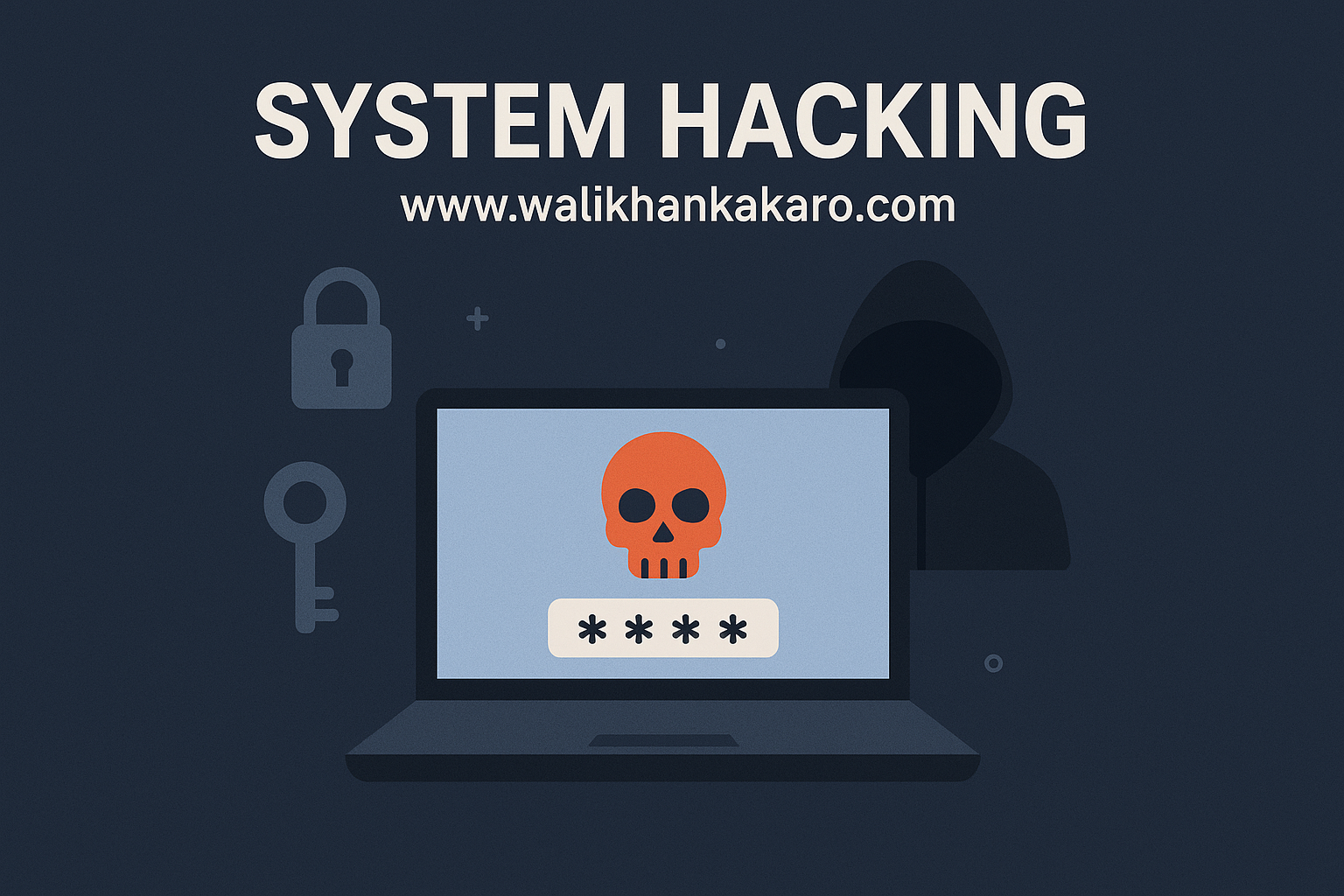System Hacking refers to the process of gaining unauthorized access to computer systems and manipulating them to perform malicious actions.
It is a major phase in ethical hacking or cyberattacks where attackers exploit vulnerabilities in a system to take control, extract data, or disrupt services.
System Hacking
System Hacking Methodology:
1: Cracking Passwords.
2: Escalating Privileges.
3: Executing Applications.
4: Hiding Files.
5: Covering Tracks.
Password Cracking:
1: Password Cracking is the method of extracting the password to gain authorized access to the target system.
2: Password cracking may be performed by a social engineering attack or cracking through tempering the communication and stealing the stored information.
Types of Password Attacks:
1: Non-Electronic Attacks.
2: Active Online Attacks.
3: Passive Online Attacks.
4: Default Password.
5: Offline Attack.
Types of Password Attacks:
1: Active Online Attacks:
Active Online Attack includes different techniques that directly interact with the target to crack the password.
1: Dictionary Attack.
2: Brute Force Attack.
2: Passive Online Attacks:
Passive Online Attacks are performed without interfering with the target.
1: Wire Snigging.
2: Man-in-the-Middle.
Default Password:
An attacker using default passwords by searching through the official website of device manufacturer or through online tools for searching default passwords can attempt this type of attack.
Check the default passwords of any device.
Website: https://www.passwordsdatabase.com/
Offline Attack:
When an attacker has access to an encrypted file.
5 common ways hackers hack any computer system
1: Network hacking.
2: Misconfiguration hacking.
3: Application-level hacking (Old versions).
4: Social Engineering.
5: Brute force attack.


